Shook & Stone can assist those injured in falls from heights in Las Vegas. This applies to scaffolding injuries, construction falls, window cleaner falls, and in many cases construction accidents.
Nevada is an at-fault state when it comes to workers’ compensation. This means that if the injured worker was responsible for getting hurt, usually by being careless, you will not get workers’ compensation benefits (Nevada Revised Statutes 616B.153). The only exception to this rule is where the injury could not have been prevented no matter what precautions the worker took (which is rare in Nevada.)
If a worker gets hurt on the job because he or she was careless, and not because of someone else’s negligence, then injured workers will get nothing. Workers’ compensation does not cover injuries caused by employees through their own carelessness. An attorney can help you determine whether or not your injury was due to your own actions and could have been foreseen. If so, then you will most likely be denied workers’ comp benefits. But if the pain that you suffered was caused by someone else’s negligence, then an attorney can help you get a fair settlement for medical bills and lost wages.
If the worker who got hurt was not at fault for the incident, then he or she will most likely receive workers’ compensation benefits. Nevada has an insurance policy called “exclusive remedy” that means that injured employees are entitled to be made whole by the employer’s insurance company. The employer is obligated to provide a safety net of sorts and make sure that its employees get the benefits they need to resume their lives and become productive members of society again.
What Happens in a Workers’ Compensation Case?
Injured workers are not required to sue their employers or anyone else if the injuries were caused by someone’s negligence (in fact, if there is already a pending workers’ compensation claim, you should get an attorney to ensure that all benefits are obtained). Since Nevada is an at-fault state, the employer or its insurance carrier will be required to pay for any reasonable medical expenses and lost wages.
What Can I Do if I Get Injured on the Job?
If you have suffered a work injury in Las Vegas, whether by falling down stairs or being struck by a forklift because of poor lighting, you should know that your employer is legally obligated to pay for all of your medical expenses and provide you with reasonable time off from work. You are also entitled to workers’ compensation benefits (such as wage replacement) if the injury prevents you from performing full-time work in the same occupations.
If you believe you have a legitimate workers’ compensation claim, contact an attorney. The lawyer can analyze your case and determine whether or not you will be compensated for your injuries, either through workers’ comp or a personal injury lawsuit (which is filed against the person who was at fault).
Worker’s Compensation and Employers Insurance in Nevada
If you do file an accident claim with your employer’s insurance company, you will not be fired. In fact, Nevada law states that injured workers have the right to file a claim for compensation without retaliation from their employers.
Not only should you seek medical attention after an on-the-job injury, but also record any and all incidents that occur before getting hurt. If you were aware of potential hazards in your workplace, you may be entitled to workers’ compensation benefits.
Fall From Heights in Las Vegas
Falls from heights are very serious and can result in broken bones or even death. The most common type of accident at construction sites is falling off scaffolding. Scaffolding usually works well enough for the purpose of supporting human weight, but there is always some risk involved with working at heights.
There are three basic types of scaffolding: A-frame, tube and mobile (such as lifts). Scaffolding is supposed to be used only for short to medium term construction works, but it is often used improperly in Las Vegas.
The following information will help you learn about various safety regulations concerning scaffold work:
How Does Scaffolding Work?
Scaffolding is a broad term that encompasses many types of structures. There are tube scaffolds, A-frame scaffolds and mobile scaffolds as well as combinations thereof. They are all built to support heavy weights in high locations safely.
A tube or cylindrical scaffold (also known as ribbon or column scaffolds) is the simplest type. It consists of a series of tubes that are interconnected with metal or wood beams. Usually, three or four (or more) columns form several tiers and provide support for roofs, floors or other structures.
Make sure you inspect all scaffolding before using it to make sure it is safe and that no work was done on it without proper permits. It is also a good idea to limit access to scaffolding once the workers leave for the day; this can help prevent accidents and vandalism.
Under Nevada Revised Statutes (NRS) § 409.060, you cannot use a tube or column scaffold unless:
The erection, dismantling and repair of scaffolds is a potentially dangerous activity, and you should take all necessary precautions. The following regulations are meant to protect both workers and the public:
Workers who erect scaffolding must be trained, competent and experienced in the use of these structures. You cannot build or repair scaffolds unless you have been certified by an accredited school or employer as qualified for this purpose.
You also cannot erect, dismantle or repair scaffold structures unless you have received the necessary training and certification. If you do not fall under one of these categories, then you must be supervised by a certified person while working with scaffolding.
Nevada law indicates that workers who are responsible for inspecting or removing scaffolds (or otherwise verifying that the structure is safe) must be properly trained and certified.
You are only allowed to enter a scaffold that is guarded by:
All scaffolds should have guardrails around their perimeter with openings no larger than 2 inches (to prevent people from slipping through). You can use safety nets to protect against falls… as long as they are properly installed, inspected and maintained.
It is illegal to use a tube or column scaffold unless you can reach the ground with both feet (and vice versa). This means that there must be some way to get on and off your workspace safely – usually ladders or stairs attached to the support structure. You should never try to work from a height unless you are confident that you can climb down safely (and vice versa).
You cannot begin to use a tube or column scaffold until it has been anchored properly. These structures have to be secured with a specific type of anchor:
Using A-Frame Scaffolding
In Las Vegas, mobile scaffolds that carry workers from heights above 10 feet must meet the same specifications as A-frame scaffolds. All mobile scaffold units must:
Scaffolds that move or are raised and lowered must be inspected before every shift and have a warning sign posted nearby to inform others of this.
The Occupational Safety and Health Administration (OSHA) has established regulations for working at heights and around scaffolding. These rules are meant to ensure that you can work safely without danger of serious injury or death:
A back barrier must be installed whenever scaffold planks can be walked on from the side. This will prevent workers from falling backwards off of a raised platform – which, in some cases, may lead to serious spinal injuries and paralysis.
A safety cage or railing must be installed when the scaffold is being used to access an elevated platform. When this is done, then you should also use a ladder to get to and from the structure.
If you are using a walkway along the face of your scaffold, then there must be a guardrail separating that walkway from the scaffold.
When placing scaffolds on uneven ground, you should level them by shimming the front, back or sides of the structure (to compensate for rises and dips in elevation). Typically, this will require using 2×4 boards to prop up the slanted portion(s) of your scaffold.
The maximum number of workers allowed on a scaffold unit at any one time is four people. This includes the supervisor and workers, but not spotters or supervisors standing off of the structure itself.
The maximum distance that a scaffold can be raised or lowered at any given time without being inspected again for compliance is 10 feet (four inches in either direction). For example, if a scaffold is raised by 20 feet, then it must be inspected again before being raised any further.
The maximum weight load of an A-frame scaffold in Las Vegas is 700 pounds with the following exceptions: single side ladder units – 600 lb load rating double sided L shaped frame – 1,123 lb inter connection rated floor system – 750 lb load rating
The maximum load rating of a ladder and scaffold at any given time is 1,200 pounds. This does not include the weight of workers on the scaffolding unit or parts that can be added to a structure (such as shelves, storage bins, etc.) Additional information is outlined on OSHA’s website for construction hazards in Las Vegas.
Seek Damages for Falls from Heights in Las Vegas
If you have been injured at a workplace after a fall from heights in Las Vegas and are looking for your legal options, give us a call for a free consultation with an experienced attorney.


